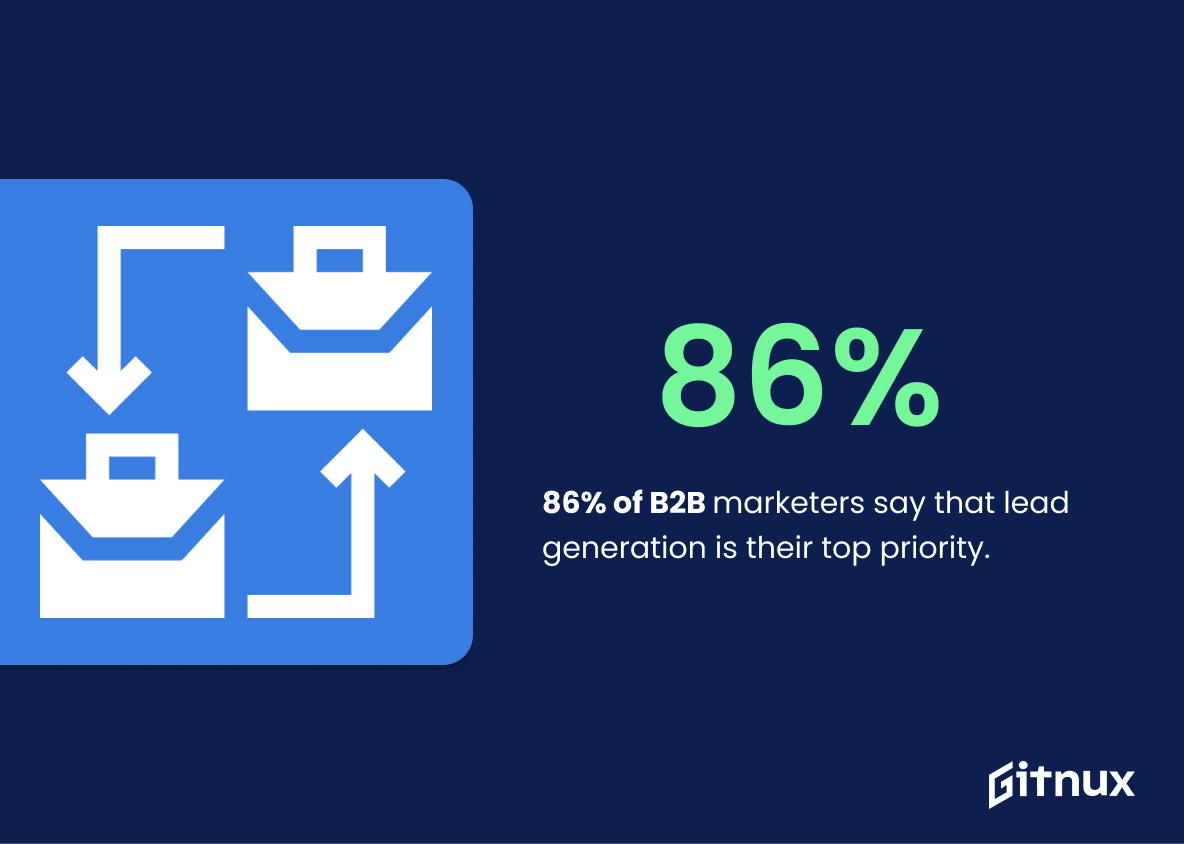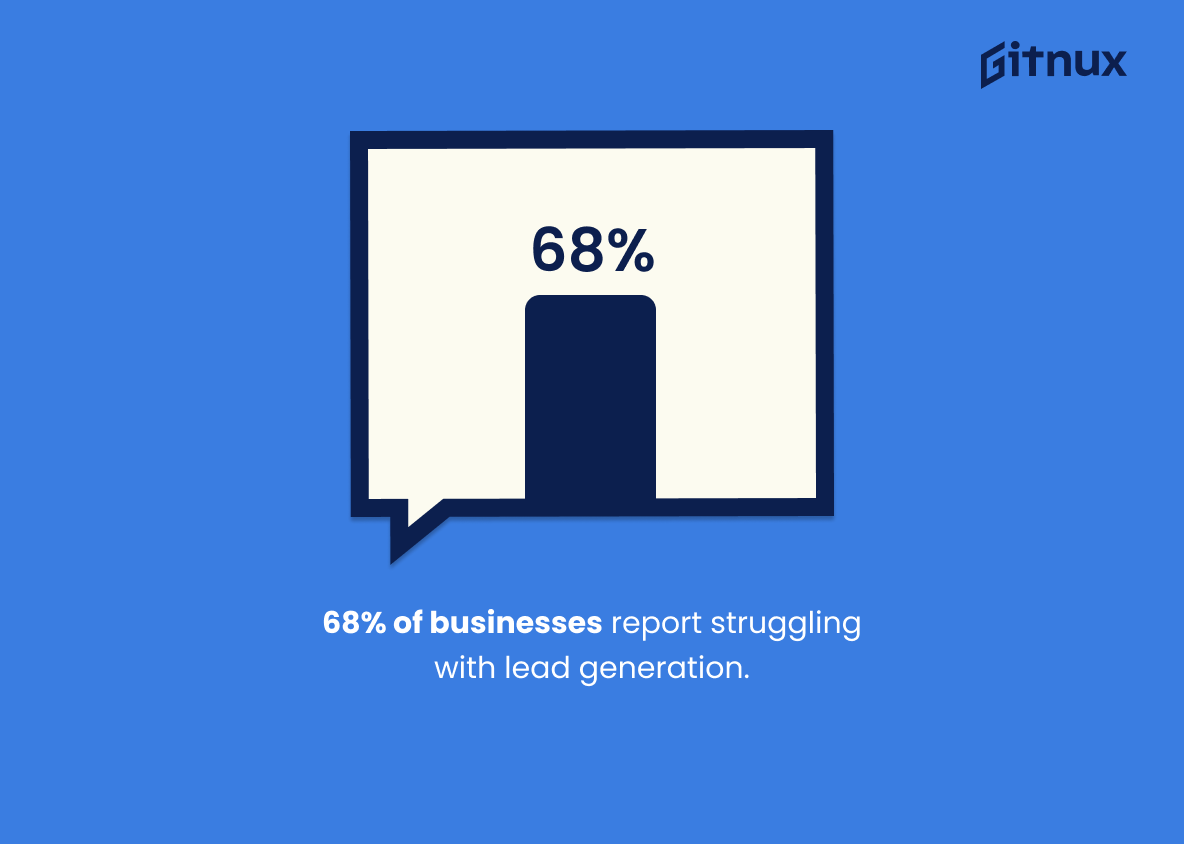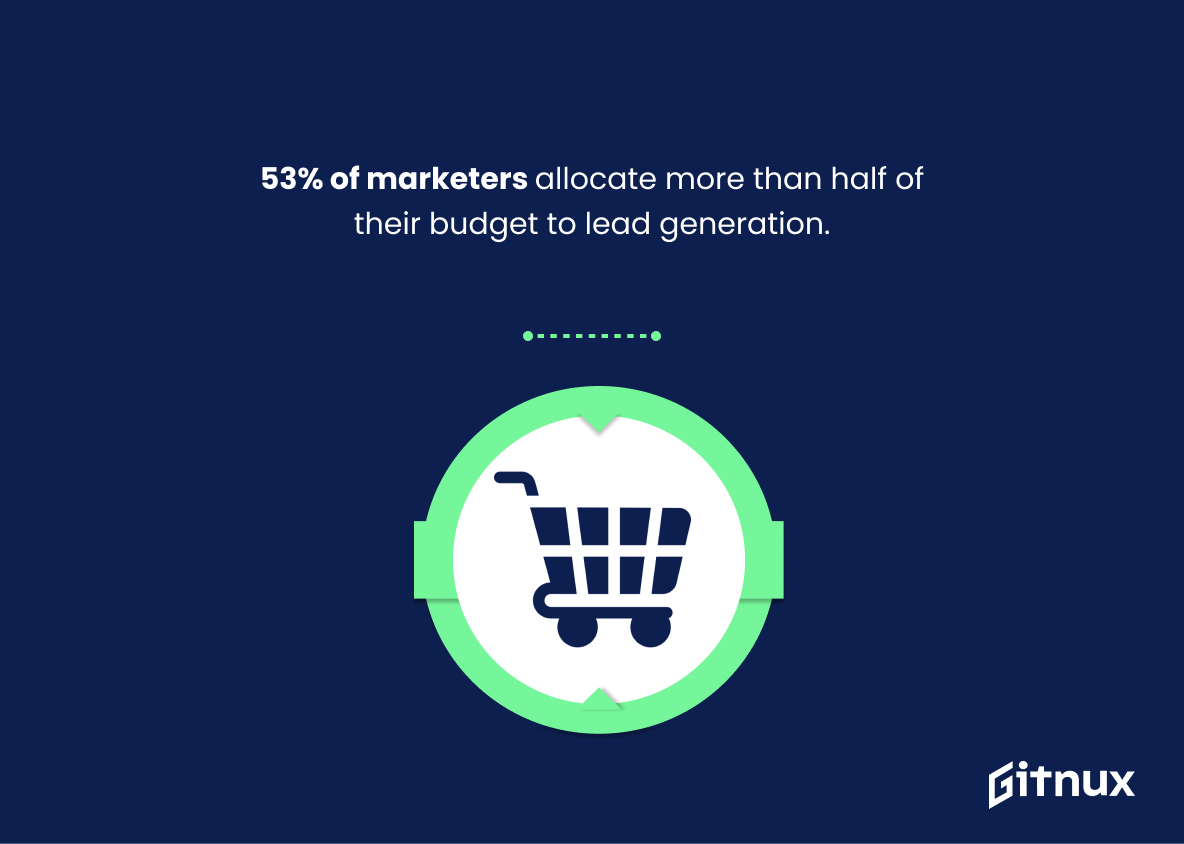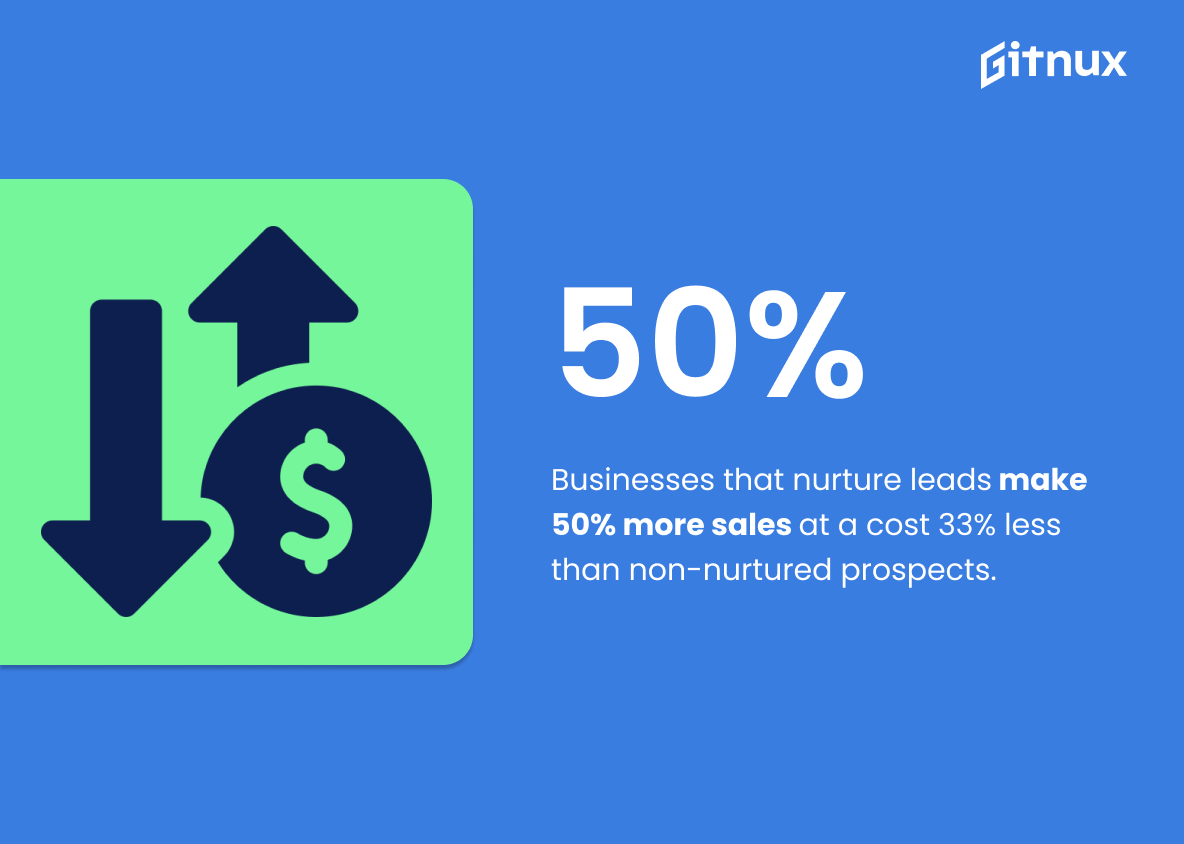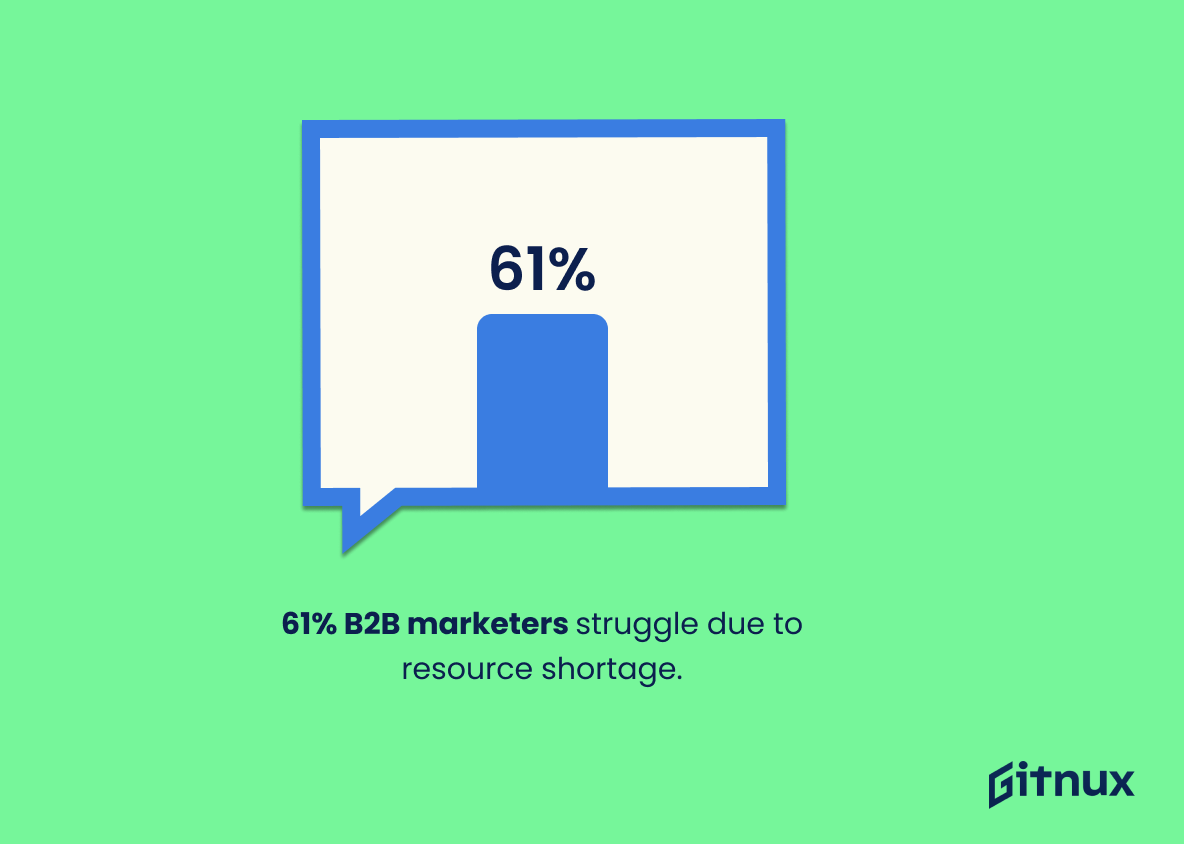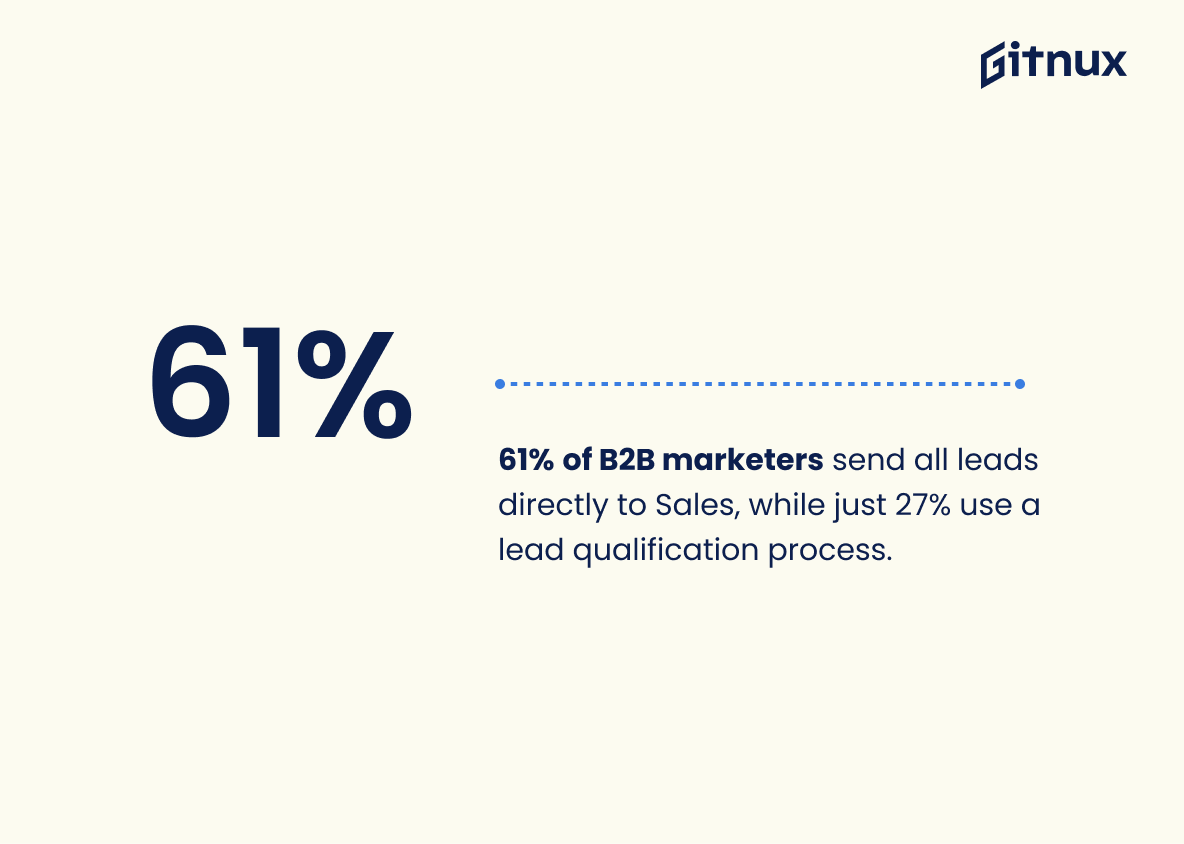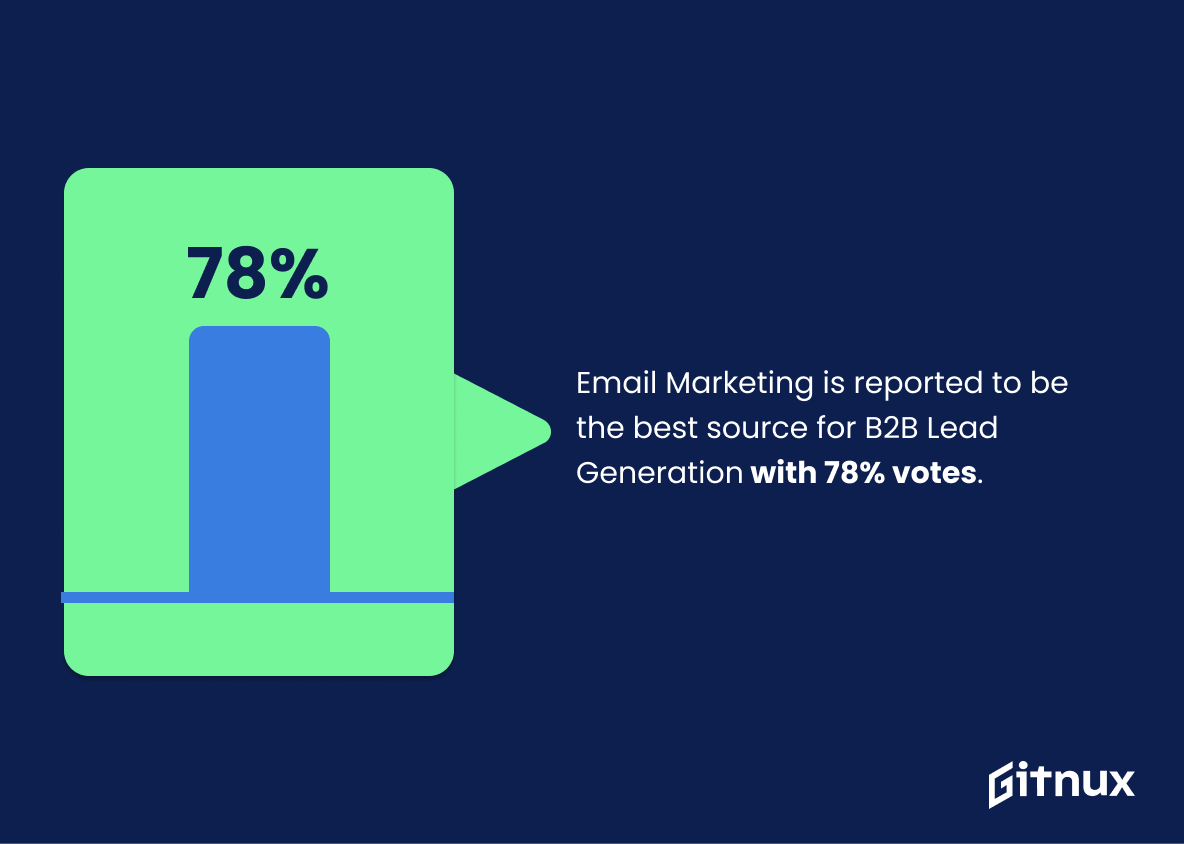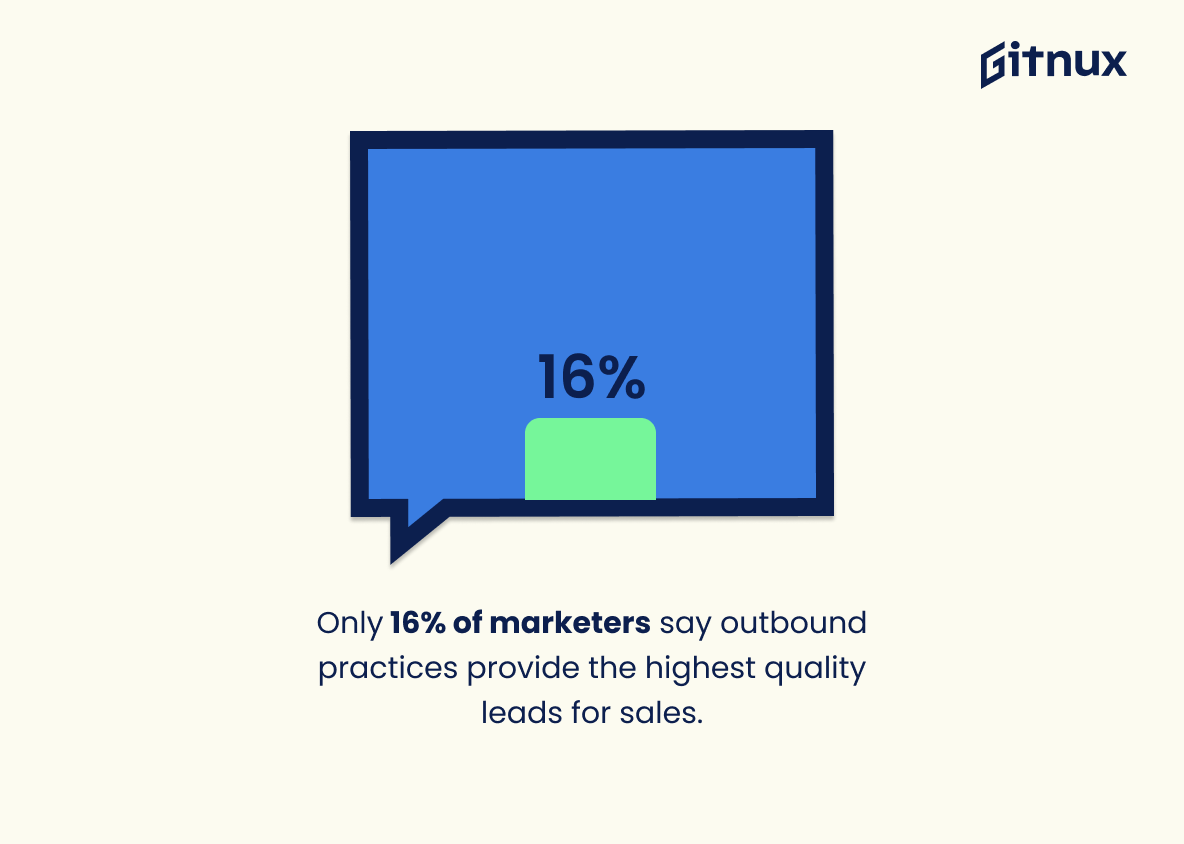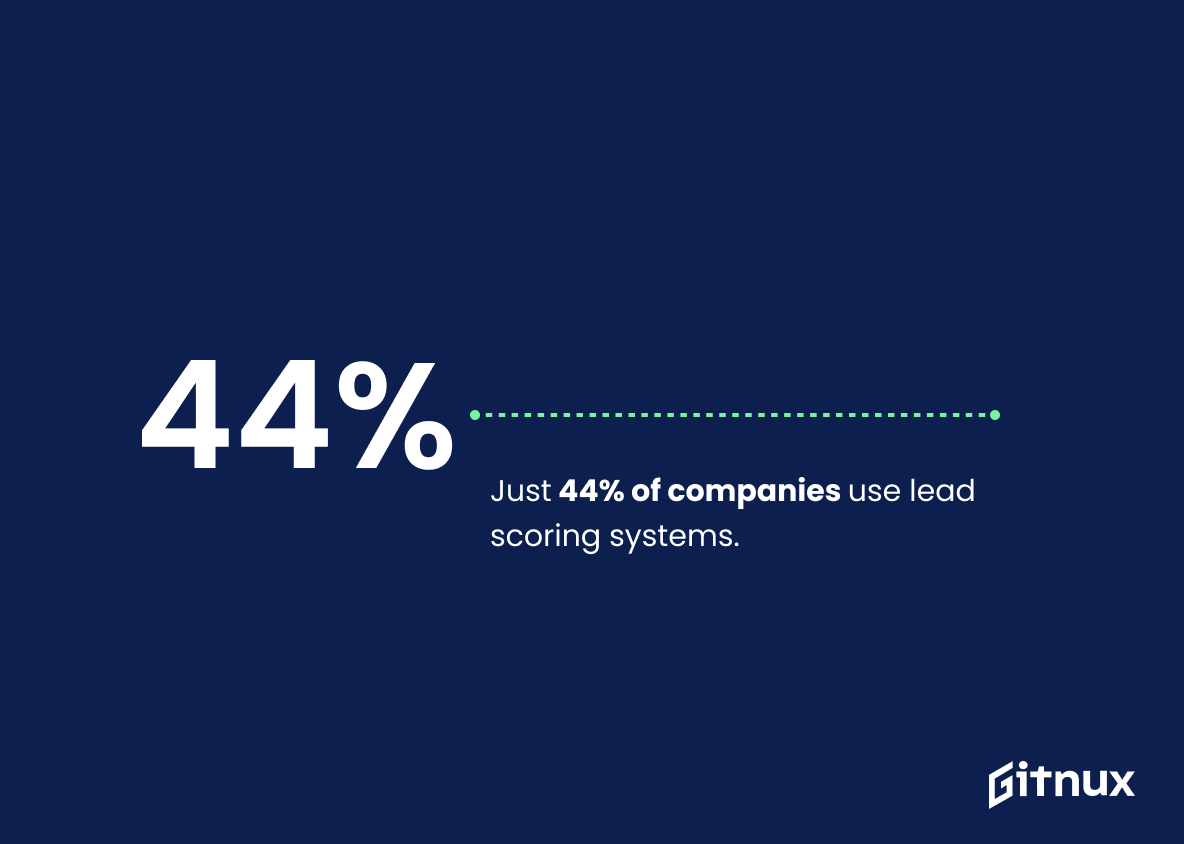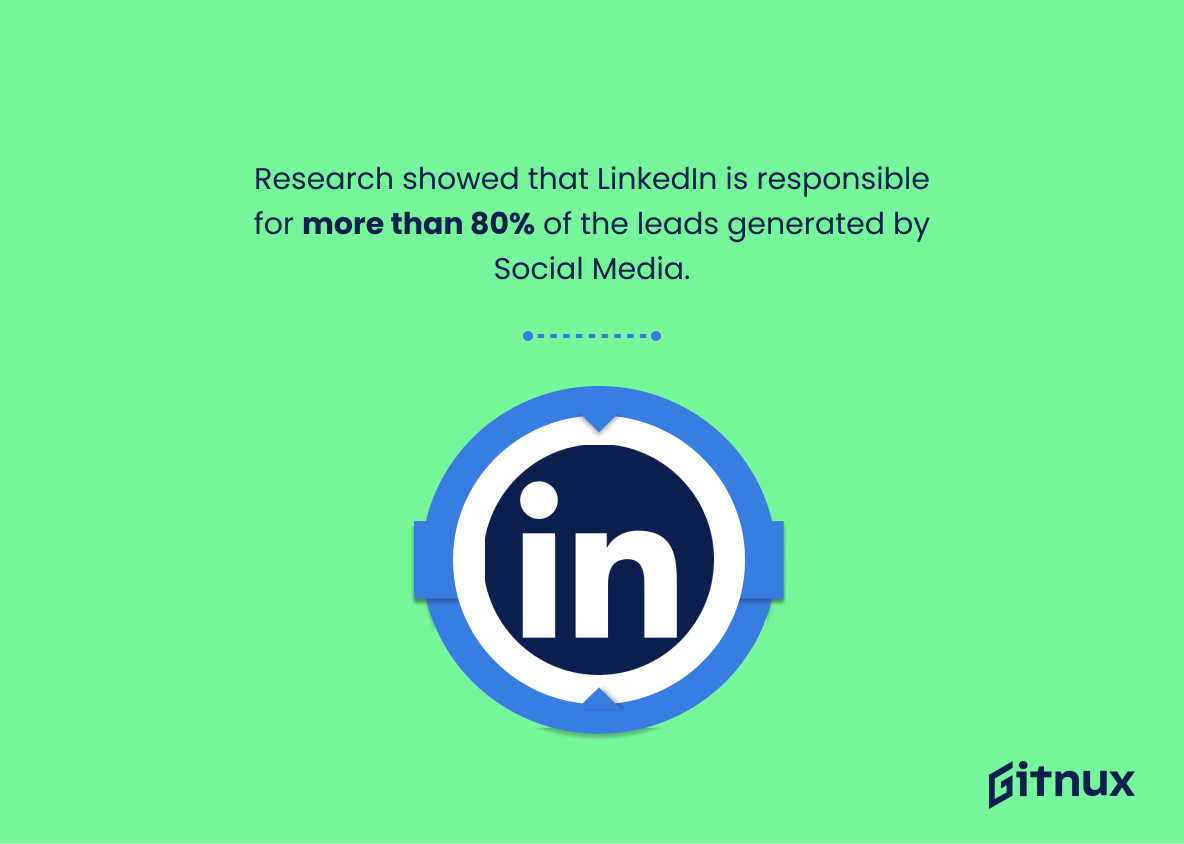Navigating today’s competitive business landscape can be a challenging feat without the right compass. One key to charting the course towards success lies in understanding lead generation. Crucial to any sales and marketing strategy, lead generation is all about attracting potential customers or ‘leads’ for your business. Powered by insightful data and statistics, this task can transform from tedious to strategic.
In this blog post, we delve deep into the complex world of lead generation industry, unpicking crucial statistics to give you a greater understanding of the industry’s dynamics, trends, and potential growth areas. Whether you’re a seasoned marketer, a budding entrepreneur or a business owner striving for expansion, these indispensable insights will serve as your guiding light in your lead generation journey. So, sit back, sip your coffee, and let’s explore the striking findings from the lead generation statistics – the very lifeblood of your business’s future growth and prosperity.
The Latest Lead Generation Industry Statistics Unveiled
86% of B2B marketers say that lead generation is their top priority.
Shedding light on the pulsating heart of the B2B marketers, this ingenious statistic manifests the overwhelming focus shifting towards lead generation. The imposing percentage – 86%, is nothing less than a bold cyber billboard, proclaiming lead generation as their ubiquitous priority.
This indicator serves as a compass in the flurry of marketing trends, pointing decisively towards the significance of lead generation. This single number underscores the centrality of lead generation to a blog post discussing industry statistics, serving as a pinch of salt, elevating and intensifying the flavors of the information served.
68% of businesses report struggling with lead generation.
Unraveling the curtain of the lead generation industry, the crux of the matter is emphasized by a hard-hitting data point: 68% of businesses reveal a grappling struggle with lead generation. This statistic not only underscores the widespread challenges prevalent in this realm, but it also sets a clarion call for businesses to ramp up their efforts, or seek professional aid in successfully transforming potential leads into loyal customers.
Furthermore, it highlights an enormous arena of opportunity for those in the lead generation industry to step up with innovative solutions that could be a game changer for almost 70% of businesses out there. This figure, therefore, is a lighthouse in the analysis of the current lead generation landscape, guiding the way to areas seeking improvement.
63% of marketers say that generating traffic and leads is their top challenge.
Delving into the heart of the statistical landscape of the Lead Generation Industry, one cannot ignore the captivating revelation that 63% of marketers see generating traffic and leads as their most formidable hurdle. This pivotal piece of data underlines the fact that the journey to successful lead generation is not a walk in the park, but an uphill battle.
In the grand tapestry of this blog post, this truism serves as a striking signpost of the complexities and challenges inherent in the industry. This data point not only heightens the appreciation of the tactics and strategies that do work, but also accentuates the relentless quest for innovative solutions that can make lead generation a less daunting endeavor for the majority of marketers.
80% of marketers report their lead generation efforts are only slightly or somewhat effective.
Drilling into the heart of the Lead Generation Industry, one can unearth the sobering realization that 80% of marketers are grappling with a deficiency in their lead generation efficacy. This statistic subtly underlines a widespread struggle that marketers are encountering, in the face of only achieving slight or somewhat effective results.
In the landscape of a blog post centered around industry statistics, this percentage foregrounds a rather perturbing symptom of a larger issue within the field. It flagpoles the urgency and demand for improved tools, strategies and know-how in lead generation.
Essentially, it raises a silent alarm – a call in need for progression, innovation and advancement within the industry. Thus, not only does it hold relevance by expanding awareness about the state of effectiveness in lead generation amongst marketers, it also firmly underpins the importance of tackling this challenge head on. And who’s to say, the solution to this struggle might just be waiting among the lines of this blog post, offering insights that could potentially turn the tables for these marketers.
53% of marketers allocate more than half of their budget to lead generation.
Delving deep into the realm of lead generation industry statistics, our attention is magnetically drawn to one key figure – 53% of marketers apportion more than half of their budget to lead generation. This ratio stands testament to the fact, singing the paradigm shift in the importance marketers are placing on lead generation.
It’s rather akin to the skeleton key of a treasure chest containing valuable prospects. Moreover, it underlines the underlying industry progression that stimulates business growth and fuels customer acquisition. It serves, then, not merely as a mere statistic, but a testament to the evolving tactics and growing emphasis in the unpredictable, but thrilling marketing battleground.
Businesses that nurture leads make 50% more sales at a cost 33% less than non-nurtured prospects.
Unveiling the numbers, the statistics vividly illuminate the hidden potential that nurturing leads holds for businesses – a treasure trove of 50% more sales. Not only does it make the cash registers ring more often but it’s also gentle on the pocket. Astonishingly, nurtured prospects incur a cost that’s 33% less than non-nurtured ones.
Visualize an acre of fertile land brimming with rich crops at a fraction of the expected expenditure – that’s what nurturing leads can do for businesses. Hence, understanding and embracing these figures in the Lead Generation Industry could be the golden key to unlocking a business’s quantum leap.
Lack of resources such as time, staff, and budget remains the biggest obstacle to successful lead generation for 61% of B2B marketers.
Navigating through the bustling market of B2B arena, the statement that resource deficit – spanning time, staff, or budget, stands as the formidable blockade to effective lead generation for 61% of B2B marketers, paints a vivid picture for any observer. The statistic sifts to the surface the gritty reality that businesses face. It underscores the critical role that adequate resources play in bolstering lead generation.
In the grand chessboard of the lead generation industry, this knowledge isn’t merely an observation but a strategic beacon, a light to guide informed decisions. The numbers unveil a compelling opportunity for solution providers to tailor their services, like automation tools or outsourcing aids, to directly address these challenges. Meanwhile, marketers can leverage this insight, to aggressively advocate for, or strategically allocate their resources to thrive in the cut-throat world of lead generation.
With this cogent statistic, the blog post progressively transforms into a treasure map, guiding its explorers – the decision makers and strategists, towards enriching eureka moments in their lead generation endeavors.
61% of B2B marketers send all leads directly to Sales, while just 27% use a lead qualification process.
This engaging data point serves as a poignant wake-up call for all businesses immersed in the realm of B2B marketing and lead generation. It strikingly highlights that a majority, 61% to be exact, of B2B marketers forgo any lead qualification process and send all leads directly to Sales. This hasty jump to convert may be loaded with potential pitfalls, with unqualified leads, higher rejection rates and lower conversion scores becoming problematic.
In stark contrast are the 27% of B2B marketers who implement a lead qualification process. Their approach significantly enhances the likelihood of conversion and ROI, as only high-value leads are channelled to the sales team. Such a prudent strategy is indicative of maximized efficiency and, likely, smoother collaboration between Marketing and Sales.
Given such disparities, it poses thought-provoking questions on the choice between quality versus quantity, the effectiveness of current marketing strategies, and the need for ongoing refinement in lead management. This statistic, therefore, acts as a compelling catalyst for introspection within the Lead Generation Industry.
Email Marketing is reported to be the best source for B2B Lead Generation with 78% votes.
In the grand arena of lead generation, the roaring champion, with 78% backing, reigns supreme: Email Marketing. This dominant contender is no featherweight in the B2B arena, its impressive backing underscores the potency and prominence of email marketing as an unrivaled strategy.
These compelling stats serve as a beacon, guiding entities in the Lead Generation Industry to increased business engagement and transformative customer conversions. As we sail through this blog post, it’s essential to recognize this landmark statistic, shaping our understanding and solidifying the stature of email marketing in lead generation.
5% B2B marketers said webinars are the most effective way to generate quality leads.
In the vast landscape of lead generation tactics, this statistic commands attention: a slim 5% of B2B marketers credit webinars as their top tool for producing high-quality leads. This tiny triumphant group illuminates a significant detail in a dense industry––webinars, though not the most utilized avenue, can hold powerful potential.
By delving deeper, one can unearth insightful strategies on how to leverage this underdog of a method, bringing a fresh and undeniably valuable perspective to the conversation around lead generation industry statistics. In essence, this small percentile sends a powerful message to all B2B marketers who dare to be different and clear new paths towards lead generation success.
Nearly 80% of companies not meeting their revenue goals attract 10,000 visitors per month or less to their website.
Crystalizing it through the prism of lead generation, the statistic presents an insightful relationship between website traffic and a company’s revenue generation. It emphatically underscores the paramount importance of having an ample volume of visitors to a business’s website. In the thriving digital marketplace, these visitors serve as potential leads, which when properly nurtured, become buyers or clients thereby increasing revenue.
Further, this captivating statistic could be interpreted as a warning bell for those in the lead generation industry. Reaching revenue goals don’t just materialize through the magic wand of having a website, but rather through the quantity and quality of traffic that flows through it. The statistic thus accentuates that generating sufficient traffic is a critical pre-requisite in the lead generation process. This reality tangibly demonstrates that successful lead generators need to focus their efforts on strategies intended to attract more than 10,000 visitors per month to significantly boost the possibilities of achieving their revenue objectives.
Only 16% of marketers say outbound practices provide the highest quality leads for sales.
Delving into the world of lead generation statistics, the nugget of insight that merely 16% of marketers attest to outbound practices delivering the highest quality leads for sales speaks volumes. It acts as a call-to-action, prompting marketers and businesses alike to reevaluate their strategies, placing less emphasis on outbound efforts.
This striking fact enforces the shift in the marketing world from traditional methods to more value-driven, inbound practices. In the grand scheme, it’s a revelation that could reshape lead generation strategies, pushing industry professionals to innovate and embrace more fruitful alternatives for optimizing sales.
Understanding this figure not only illuminates the performance and effectiveness of outbound marketing strategies but also provides intriguing ammunition for discussions on developing more efficient, customer-centric lead generation tactics.
Straight from the nerve center of the lead generation industry, it provides a unique insight that could dictate future trends, challenge long-standing norms, and ultimately, change the game.
Just 44% of companies use lead scoring systems.
Diving into the intrigues of the Lead Generation Industry Statistics, one can’t help but stop and ponder on the revelation that merely 44% of firms employ lead scoring systems. This is not a figure to be ignored, and certainly possess a compelling story within the world of lead generation.
Imagine it as the moment when you find only less than half of the competing racecars on a track possess state-of-the-art navigation system. This changes the nature of the race, doesn’t it? Similarly, lead scoring systems offer an incredible advantage, assisting companies in sorting and prioritizing leads based on their potential value to the business. They inject precision into a process that can otherwise resemble an untamed beast.
Hence, this 44% statistic becomes an eye-opener, highlighting a clear opportunity for improvement. It silently waves a flag, urging the remaining 56% of companies to step into the advanced world of lead scoring, potentially leading to more efficient resource allocation and improved sales performance. It’s like an untapped gold mine waiting to be discovered and exploited by the savvy entrepreneur.
B2B companies that blog 1-2 times a month generate 70% more leads than those who don’t blog at all.
When unraveling the threads of the Lead Generation Industry through statistics, one might be swayed by the compelling narrative that the figure ‘B2B companies that blog 1-2 times a month generate 70% more leads than those who don’t blog at all’ spins. Acting as a beacon in the somewhat foggy landscape of lead generation, this statistic shines light on the substantial role blogging plays in carving a successful lead generation path.
It is akin to a treasure map for B2B companies, highlighting that the ‘X’ marks not just regular blogging but intelligent frequency as a significant driver of lead generation. The not-so-subtle implication here is a game changer: abandon the archaic approach of disregarding blogs and embrace the power of blogging 1-2 times a month. Because, in the end, who wouldn’t want a piece of that 70% larger piece of the lead generation pie?
Research showed that LinkedIn is responsible for more than 80% of the leads generated by Social Media.
Piercing through the fogs of data, this statistic emerges as a sentinel in the intricate landscape of lead generation. Standing at over 80%, LinkedIn’s contribution to leads grappled from social media is indeed substantial. Nestled within this figure, we find a compelling affirmation of LinkedIn’s monumental role in lead generation – an invaluable insight for those who maneuver their way within its industry.
Viewing through the prism of this statistic, we find it’s importance magnified in a blog post about Lead Generation Industry Statistics. Why so? It encapsulates the magic spot where lead generation focuses its beam – Social media. And even more crucially, it underscores the significance of LinkedIn, unmasking it as the leading powerhouse of lead generation within the realm of social media.
As such, this statistic is not just an indicator, but acts as a compass, guiding one’s strategies in the ever-evolving matrix of lead generation. Highlighting this would help industry professionals and novices alike, to streamline their efforts, stand out in the crowd, and yield better returns, from the boundless opportunities that LinkedIn has to offer.
On average, companies respond in 42 hours to their leads whereas speedier competitors with a response time of less than an hour are 7 times likelier to qualify the lead.
Delving into this particular statistic brings to light a critical facet of successful lead generation – the imperative role of response time. In a rapidly revolving business world, an average response time of 42 hours might seem to exhibit corporate punctuality, however, when pitted against competitors with an agile approach, it demonstrates potentially detrimental delays. This number underlines the stark competitive advantage of businesses responding within an hour, being seven times more probable of qualifying the lead.
The essence of this statistic in a post regarding Lead Generation Industry Statistics is to call attention to this often underappreciated, yet considerable aspect of the lead generation process. It subtly yet unmistakably signals to businesses the necessity of agility and quick response mechanisms, while also reinforcing that speedy responses could mean the difference between securing or losing potential business.
79% of marketing leads never convert into sales. Lack of lead nurturing is the common cause of this poor performance.
Unraveling the veil of numerical facts reveals this intriguing insight: a startling 79% of marketing leads don’t cross the finish line into the realm of sales. The apparent culprit lurking in the shadows is a widespread neglect in nurturing these leads. This tallies considerable significance within the sphere of Lead Generation Industry Statistics.
Diving into the heart of lead generation, this statistic waves a caution flag on the racetrack, indicating that an overwhelming majority of potential customers are slipping through the fingertips of marketers. Asserting the urgency of proficient lead nurturing, its echoes resonate throughout the industry, urging strategies to pivot towards creating a more supportive journey for leads – ultimately spinning the conversion wheel more effectively.
B2B marketers are focusing more on quality leads than quantity, where 67% believe improving leads quality is more important than increasing the quantity.
Delving into the heart of lead generation industry statistics exposes a shift of significance within B2B marketing strategies. Previously drowned in the game of numbers, B2B marketers are now steadily navigating towards the land of quality. Out of this, 67% favor improving the caliber of leads over simply multiplying them. The increased importance placed on quality reflects an evolution in understanding effectiveness and profitability within the industry.
The revelation showcases marketers’ realization that nourishing few but substantial leads can potentially yield better conversions, pushing the industry towards a more focused and strategic approach in lead generation. This transformational perspective adds a layer of depth and insight to the discussion on lead generation industry trends, indicating the yardstick against which successful B2B marketing strategies should be measured.
Conclusion
In summing up, today’s lead generation industry is growing exponentially. The statistics highlight the immense potential and benefits businesses can reap from successful lead generation strategies. To stay competitive, it’s important for businesses to not just understand these numbers but use them as a roadmap for planning effective lead generation strategies.
Whether you are a small start-up or a well-established organization, embracing these statistics in decision-making will ensure greater success in your lead generation efforts. Undoubtedly, the ever-evolving digital landscape will continue to reform the lead generation industry, presenting new opportunities. Staying updated with these trends and statistics, therefore, is crucial for anyone aiming to be a game-changer in their respective markets.
References
0. – https://www.www.marketingprofs.com
1. – https://www.www.statista.com
2. – https://www.www.vidyard.com
3. – https://www.www.hubspot.com
4. – https://www.business.linkedin.com
5. – https://www.www.curata.com
6. – https://www.www.brighttalk.com
7. – https://www.blog.hubspot.com
8. – https://www.www.b2bmarketingzone.com
9. – https://www.www.annuitas.com
10. – https://www.www.superoffice.com
11. – https://www.foundationinc.co
12. – https://www.www.demandgenreport.com
